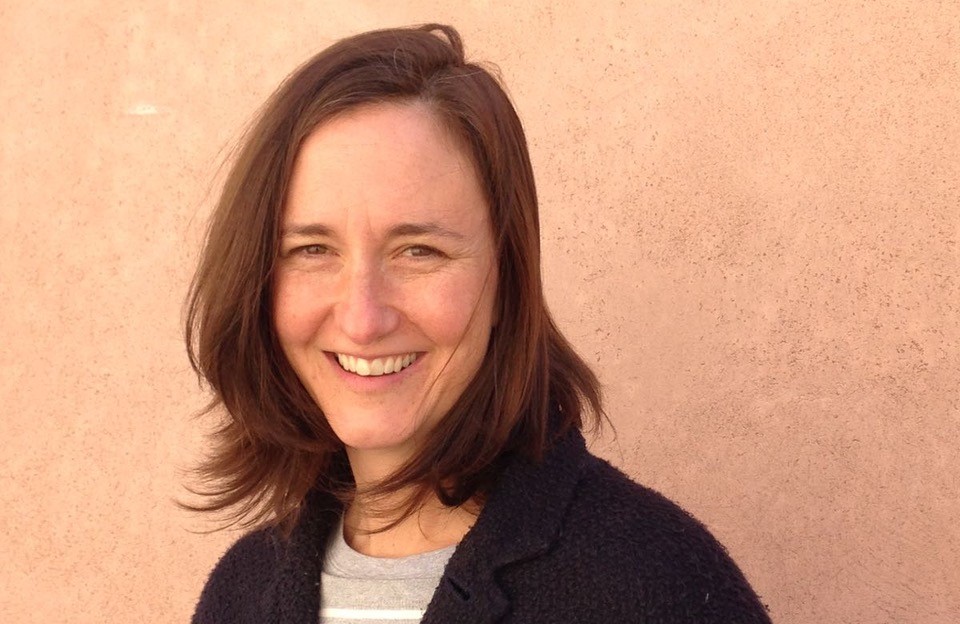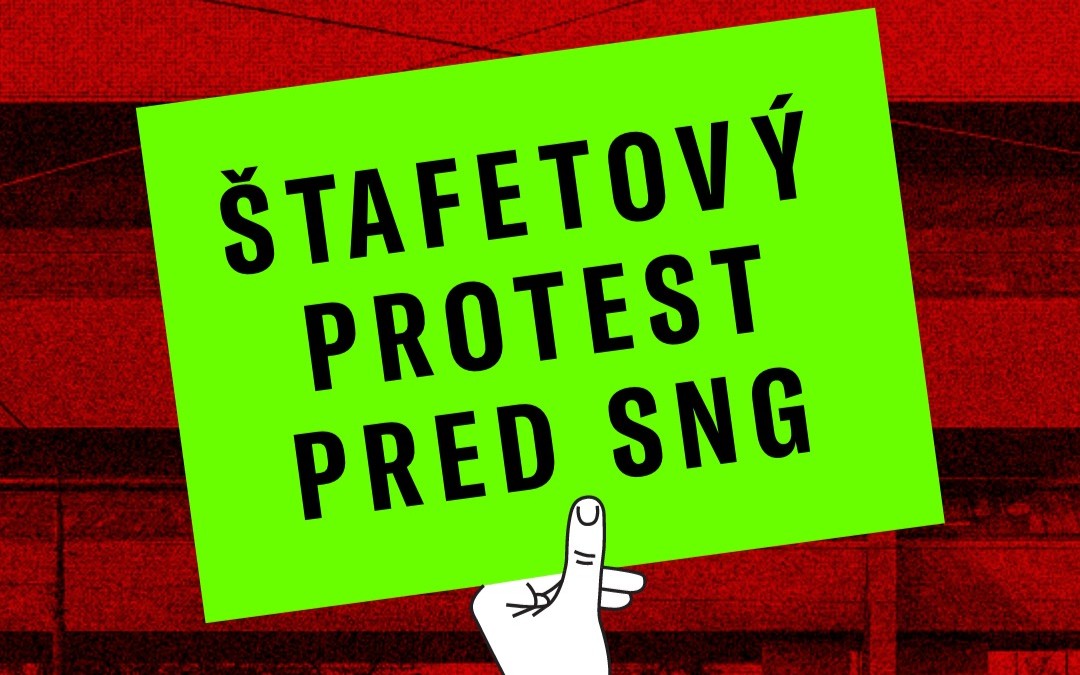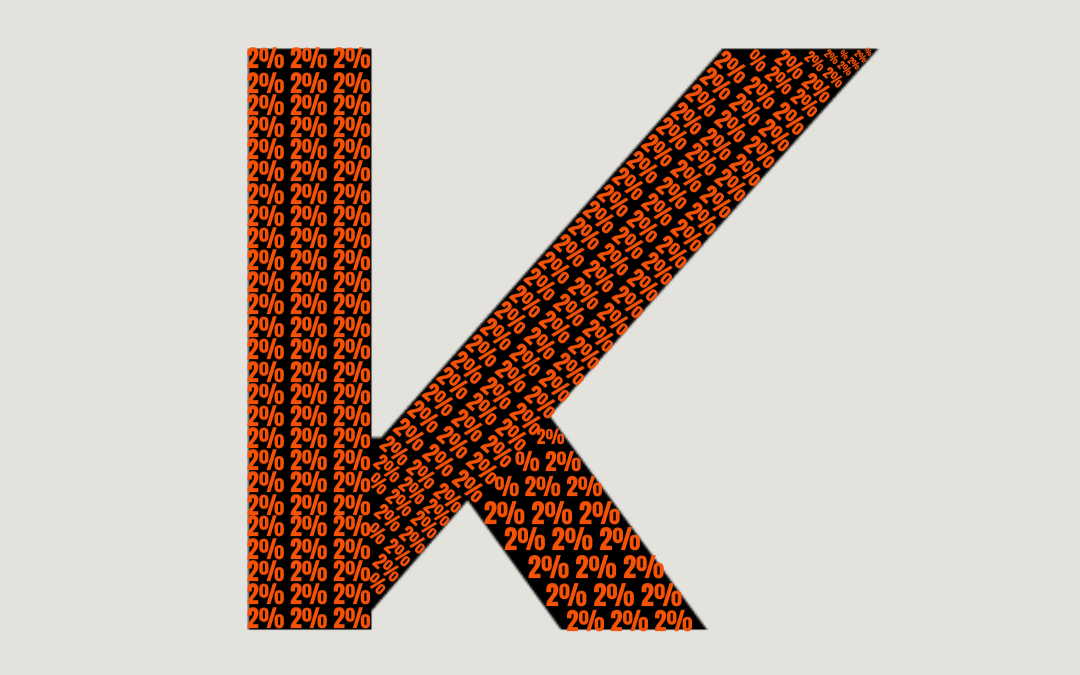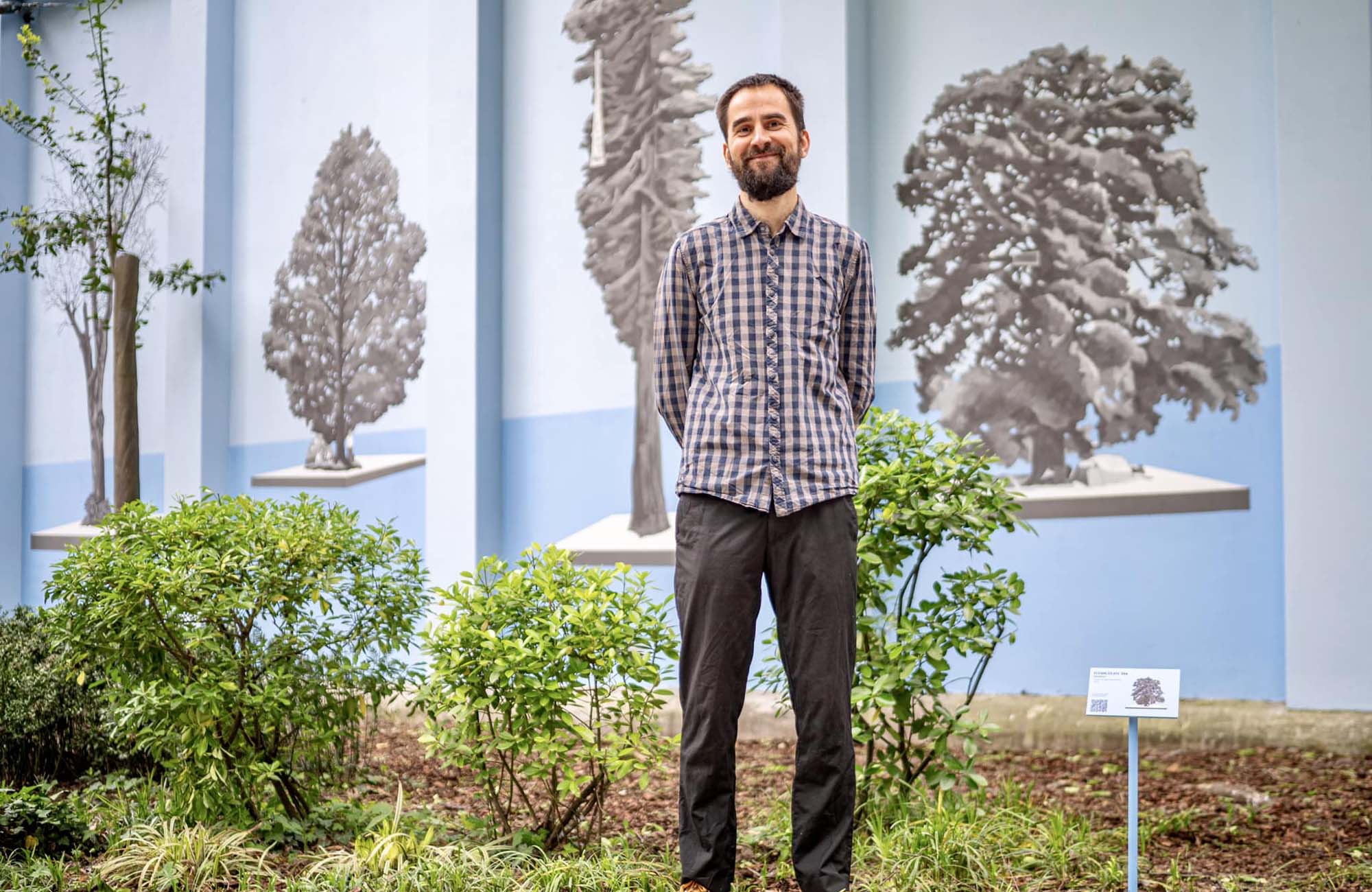
Gentle Resistance
WORKS BY OTO HUDEC AND EVA KOŤÁTKOVÁ IN THE CZECHOSLOVAK PAVILION AT THE 60TH VENICE BIENNALE
At a time when almost everything is characterised by division and rivalry, it was liberating to see the Czechoslovak Pavilion return to the 60th Venice Biennale with a metaphorical joint project after a hiatus in 2022. This year, between April and November, Eva Koťátková‘s exhibition (curated by Hana Janečková) is on show inside the pavilion in the Giardini Gardens, while Oto Hudec‘s work (curated by Lýdia Pribišová) is on view outside the pavilion.
While in recent decades Czech and Slovak artists have alternated exhibiting in the jointly owned pavilion, this year a cooperation between the Czech Republic and Slovakia has been established, enabling artists from both countries to exhibit. While the links between the two exhibitions are clear, they have their own distinct artistic practices, as well as supporting teams and institutions.
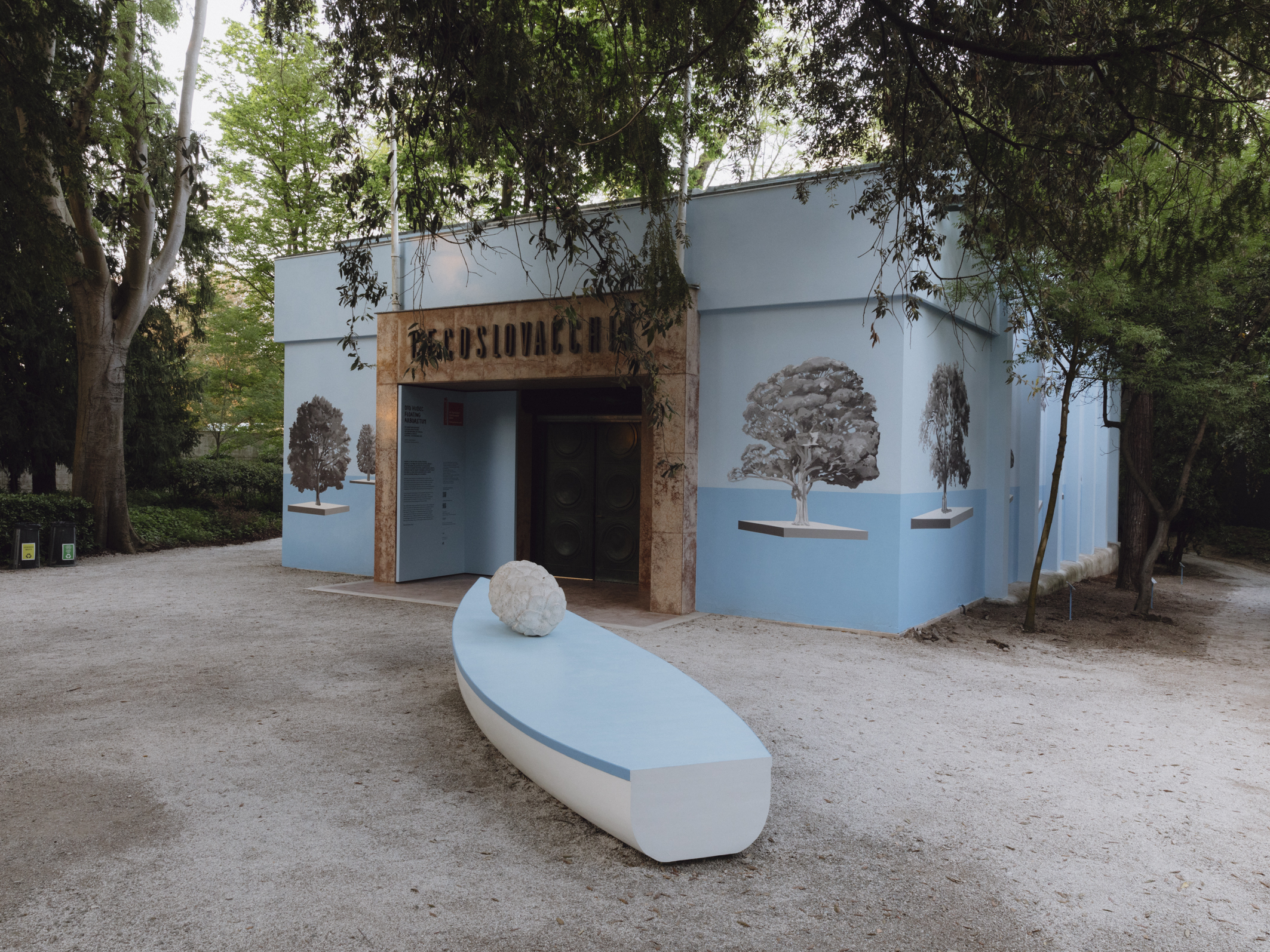
While the British and French Pavilions (with exhibitions by artists John Akomfrah and Julien Creuzet) also used projections to cover the exterior of their buildings with installations, luring the viewer in with the strongest possible stimuli, the Czechoslovak Pavilion did the same, but with more modest, socially and politically bold gestures. (On the day of its opening, there was even a protest against the current Slovak cultural policy.) Both artists have long been concerned with the layers of meaning of the Anthropocene and the harmful impact of humans on the environment, as well as the relationship between human and non-human beings and the redefinition of these relationships. With their differences, the two exhibitions underline their standpoint and the current state of art in the region.
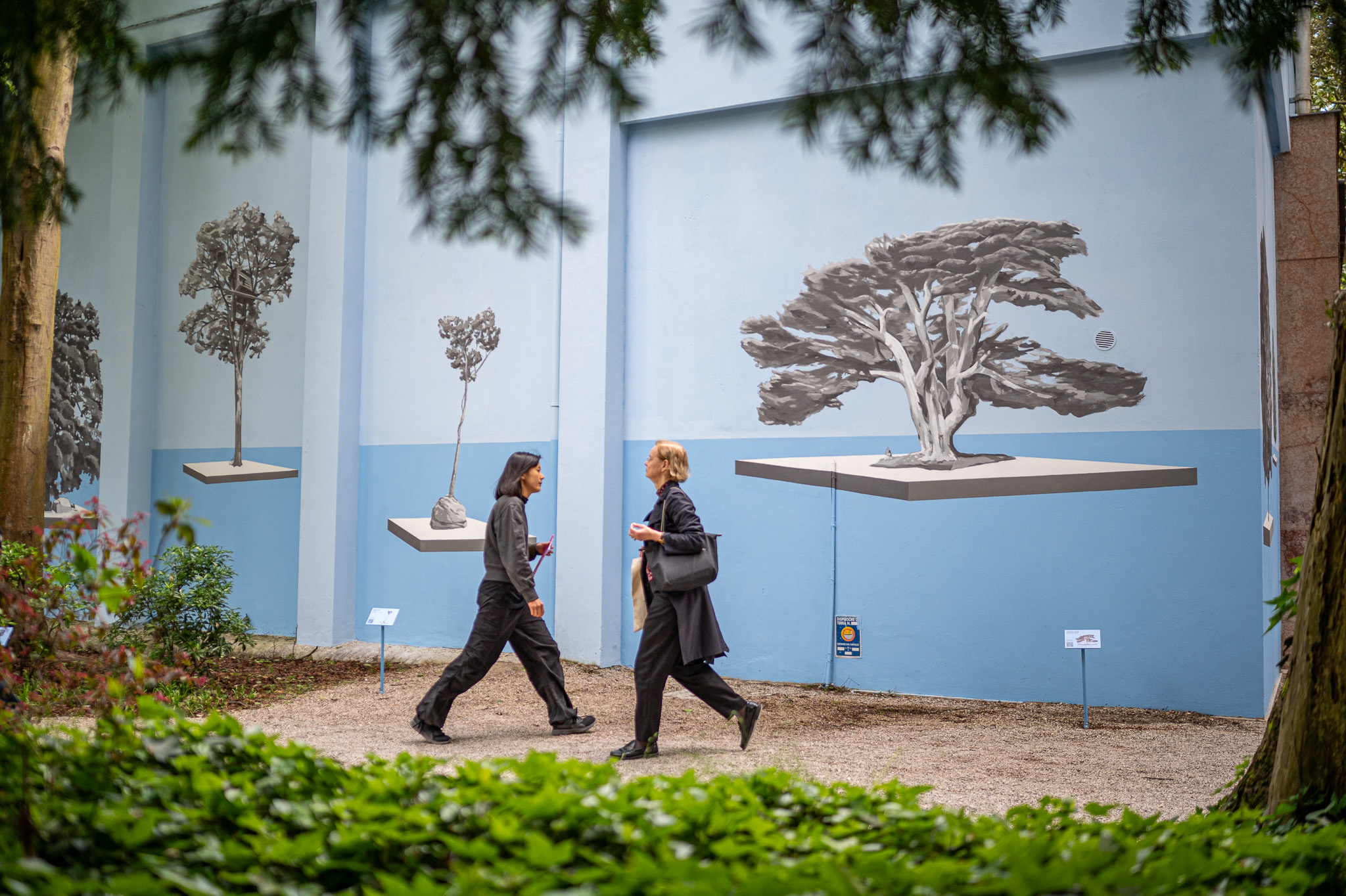
Let’s head from the outside in. Oto Hudec’s work would stand out even if the trees that cover the entire building, depicted against a light blue background, were merely a reflection of the Giardini’s flora. However, looking at the work, it soon becomes clear that the artist was interested in the political movements and protests that have been organised in recent decades to defend trees, forests and ecosystems. The Floating Arboretum is a collection of successful and unsuccessful socio-ecological movements, where a range of standpoints are represented, from the depiction of endangered species to efforts to stop deforestation. Examples include Julia’s story from 1997-1999, when she climbed a 1,000-year-old giant coast redwood tree in California to save it from being cut down, or the ash tree native to the Himalayas, which the Chipko Movement has been protecting from being cut down since 1973 through various actions (such as hugging the trees or drumming loudly). It is also worth visiting the project page for more information (and songs), where you can click on the trees to read the individual stories.
The seccos’ power lies in their simplicity: they depict in the classical sense of the word, but by making the trees themselves the protagonists. They have a particular type of agency; the groups fighting for their causes are only revealed in the background, in the descriptions of the artworks. Hudec’s work can also be seen as an interpretation of the practice of commemoration: trees that have lived for hundreds of years are the ones to tell the stories of environmental destruction, of the damage done to them, and of possible ways out.
And, as we learn from the curatorial text, Hudec’s collection creates an imaginary, fictional arboretum: a utopian space where vulnerable trees in need of protection can be present together. Imagining and creating the future is a recurring element in Hudec’s work: but unlike many of his contemporaries, it is not a negative dystopia (while not denying the crisis of our current situation), but rather his approach can also focus on the possibility of hope due to cooperation and the power of communities.
As the visitor walks around the pavilion, a new kind of spatial exhibition viewing experience emerges: the line of trees never seems to end, merging against the blue background, yet each one tells a different story, bringing in a different geographical location, expanding the local, Eastern European perspective towards a global reading.
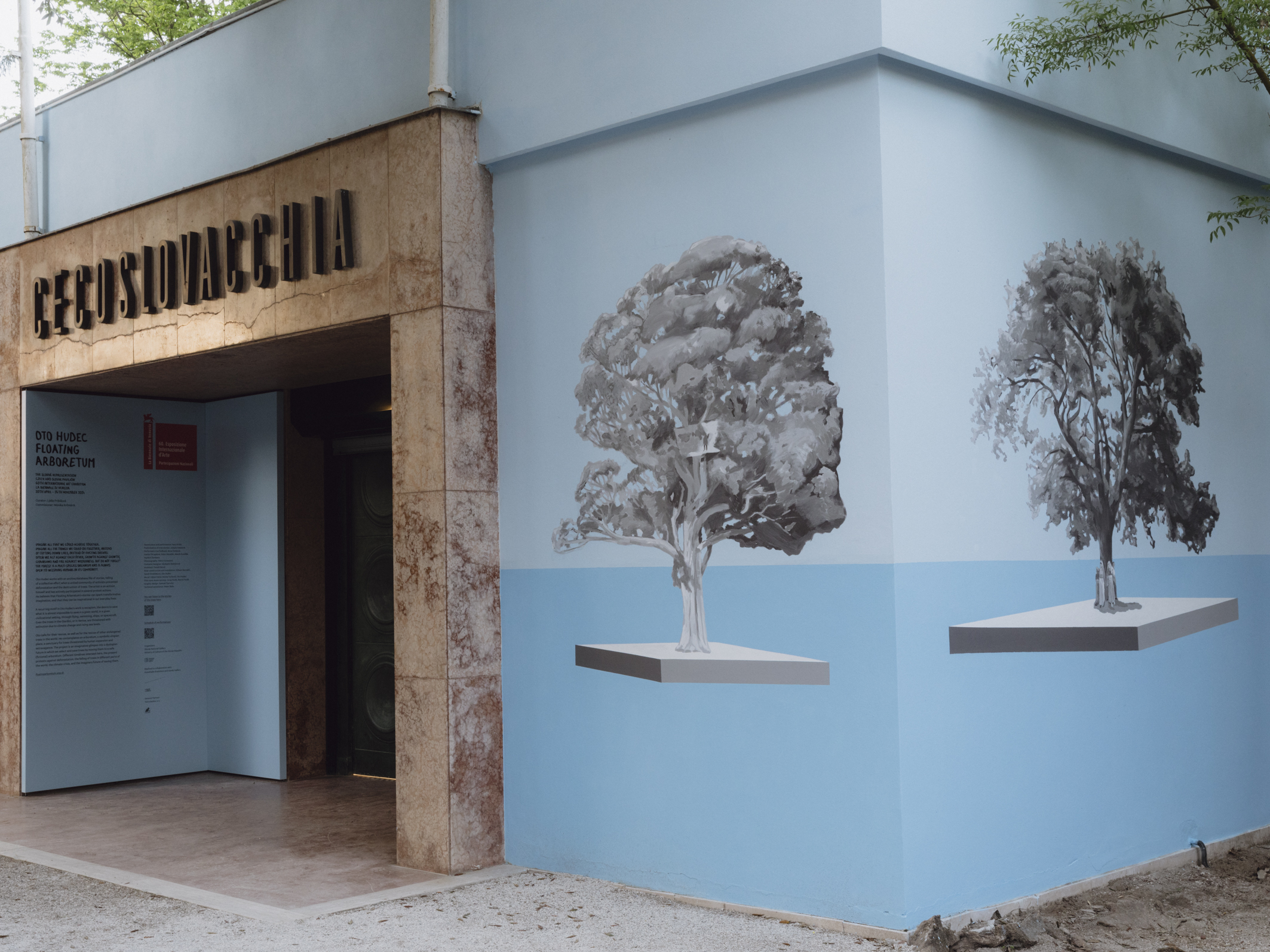
In front of the pavilion is a boat from which a collection of songs, each associated with a unique tree, can be heard. These can be experienced the best at the opening or at the once-a-month performances, during which the songs are performed live, which are written by Juliana Sokolová, music by Fero King, choreography by Petra Fornayová, costumes: Michaela Bednárová, performed by Eva Šušková, Anna Čonková, Ivanka Chrapková, Peter Mazalán, Marek Kundlák, Vojtěch Šembera. The bow of the boat features the pinecone of the Arolla pine, an endangered species native to Slovakia.
It is clearly an important aspect, as the curator has mentioned several times on different platforms that Hudec’s “arboretum” for the exhibition can serve as an inspiration albeit not all actions to protect trees and forests featured in the project were successful. This is also the context of the call on the project’s website, where the public is encouraged to contribute to the collection of tree specimens, they consider worth saving. This simple but participatory gesture could help the project’s afterlife, which, as a spectator, I felt was well thought out.
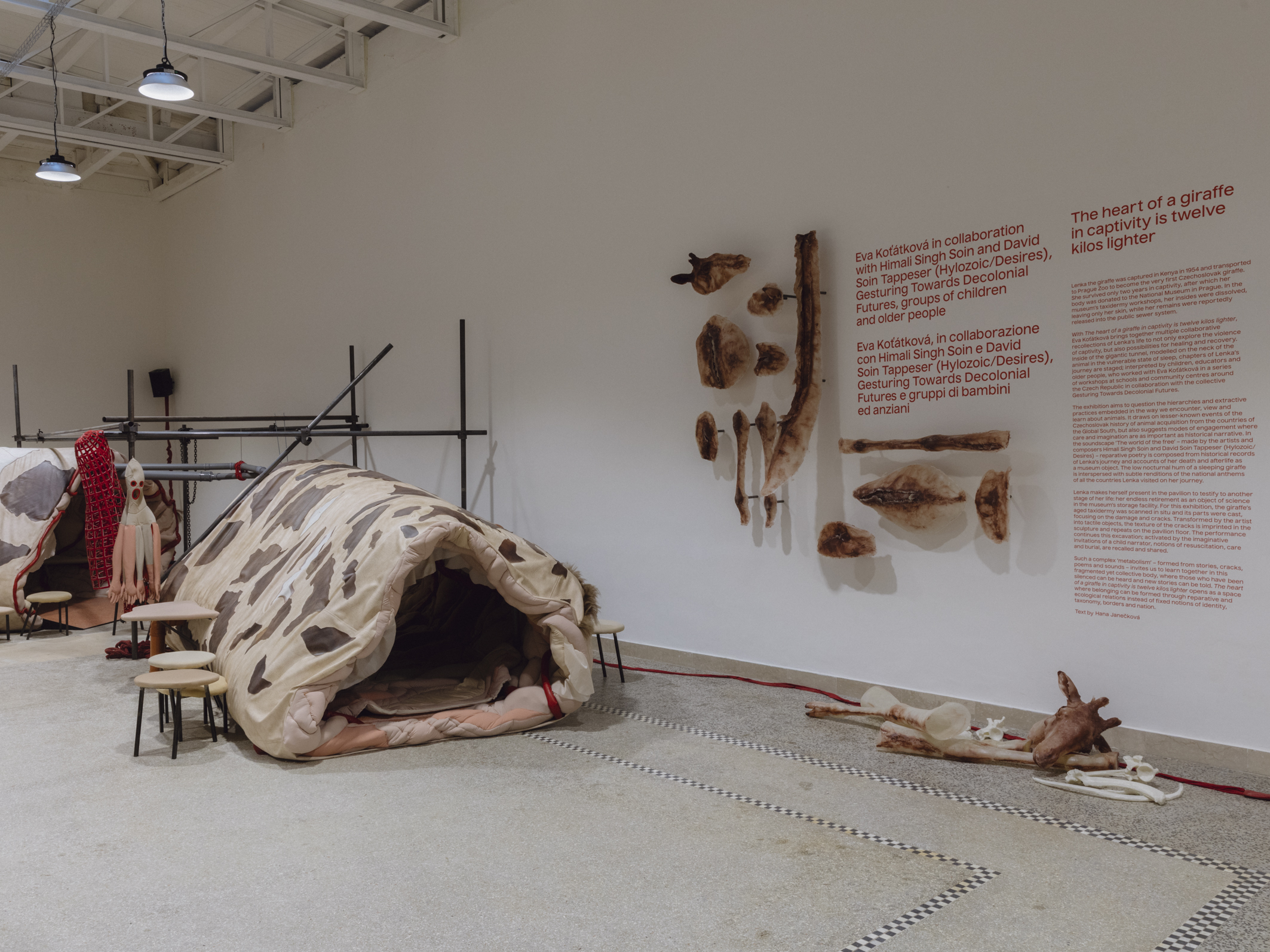
Inside the pavilion, an installation by Eva Koťátková (The heart of a giraffe in captivity is twelve kilos lighter; collaborators Himali Singh Soin and David Soin Tappeser – who provided the sound and music under the name Hylozoic/Desires -, the Gesturing Towards Decolonial Futures collective, and a group of elderly people and children) is the focus of the exhibition, that literally invites the viewers to enter the body of the giraffe alluded to in the title. While Hudec explores the oppression of plant life (flora) by society, Koťátková focuses on the living conditions, opportunities and rights of animals (fauna), taking a local story that also links Africa and Eastern Europe. Lenka, the giraffe, was captured in Kenya in 1954 and subsequently brought to the Prague Zoo as the first zoo giraffe in Czechoslovakia. She only lasted two years there, and after she died, she became the property of the National Museum in Prague and was on display until 2000. Her remains are still part of the museum’s archives.
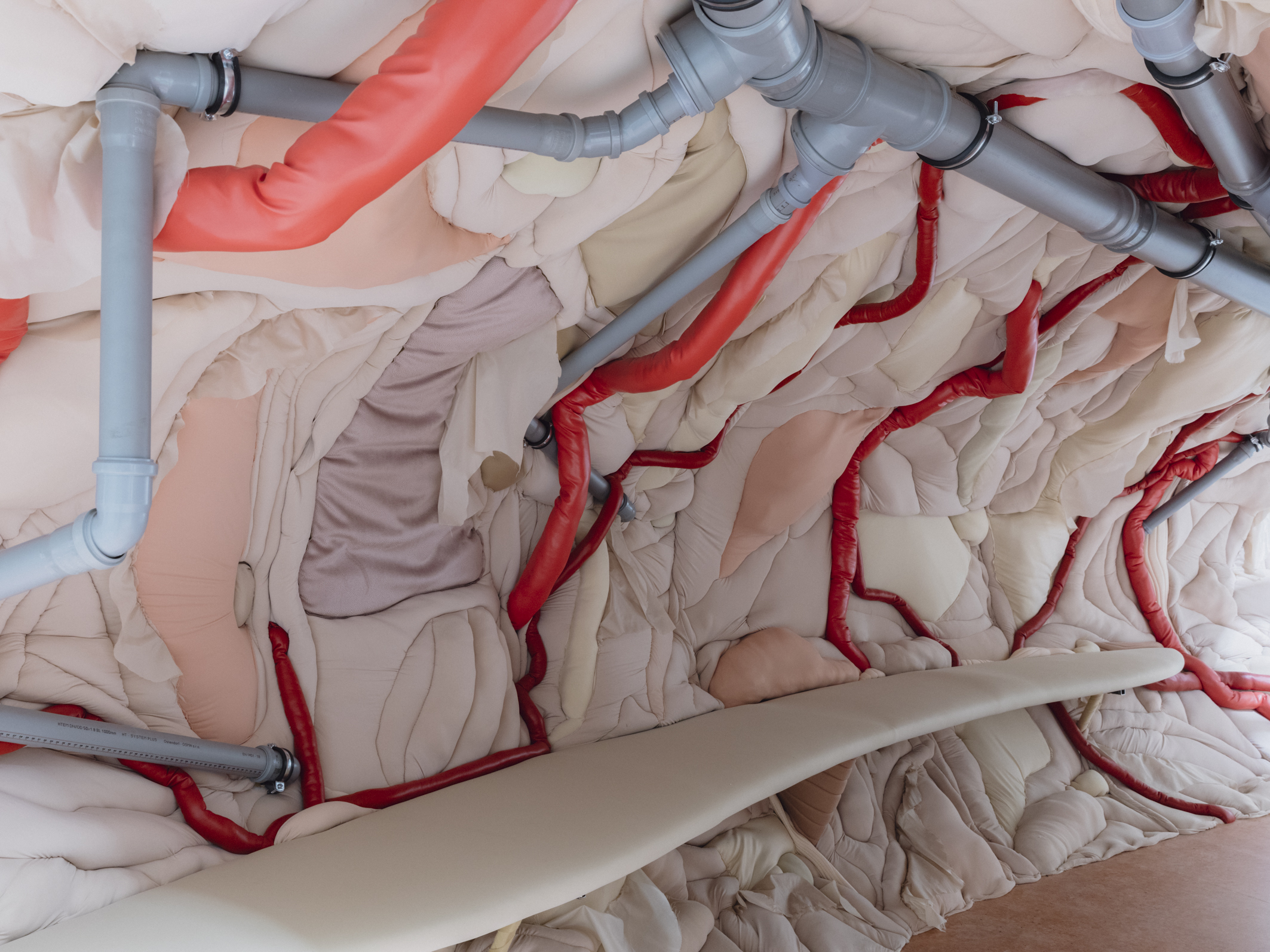
In Lenka’s complex story, which links the human with the non-human, the animosity of humans with the humanity of animals, we are confronted with the power of colonisation, the power structures of collection and archiving, the issue of representation and the involuntary exploitation encoded in it. What makes the installation particularly powerful – which is also fitting for the generally hurrying Venetian audience with short attention spans – is that Koťátková represents the animal’s gradual loss of agency sensually and emotionally, evoking the viewer to identify with the giraffe.
Entering the giraffe’s body is a tactile experience that equally relies on our ears next to our touch and sight. Walking through Lenka’s “neck”, the visitor can learn about the different phases of her life: from her first habitat in Africa to her journey to the Prague Zoo, then to the archiving process of entering the collection of the museum, we hear a sensitive, detailed and evocative story, that highlights the giraffe’s perspective. All of this is read/acted by children and elderly people (as if it were a radio drama): instead of choosing to be neutral narrators, the voices evoke a more personal, fairytale-like world with storytelling techniques.
By highlighting the giraffe’s vulnerability, the zoo’s spectacular but miserable conditions, and the fact that the animal was not “at rest” even after its death, Koťátková, like Hudec, reveals invisible narratives that we have long thought were not our own, not ours to tell. The involuntary intertwining and interdependence become clear, while the artistic representation of the giraffe’s body – once we enter its interior – loses its concrete impact on the visitors, creating a more visceral and abstract impression, shaped also by experience of crawling in and through the installation.

Alongside the installation, which fills almost the entire space, objects like taxidermy are displayed on the wall, evoking “relics” of natural history museums, as well as the costumes and objects of the exhibition’s accompanying performance. In her other projects as well, Koťátková often leaves the artefacts, costumes, masks and tools in the exhibition space that are activated from time to time by performers. On the opening days of the pavilion, the three performers presented short excerpts from the life of the giraffe, slowly interacting with the objects that resemble animal body parts, creating a unique choreography. However, these objects in the absence of activation, create an oppressive atmosphere and at the same time invite us to interact and connect with them. Unfortunately, we were not able to do so, but more performances are expected in the autumn, mostly during the closing days of the exhibition.
Although Koťátková and Hudec’s projects differ in their approach and angle, they both explore various scales of human intervention in nature and the status of non-human beings. Hudec’s exhibition is more hopeful, presenting communities and political groups acting against human destruction. Which he does without making the mistake of erasing the very creatures his project focuses on and for whom all this action is made, the trees.
On the other hand, Koťátková’s exhibition presents the process of exploitation committed in the name of science (as well as art, entertainment and education), during which its subject (in this case Lenka the giraffe) has increasingly lost her right to live. While her project does not specifically condemn the museum nor the act of collecting, it makes a clear statement about the damage these can cause, especially without institutional reflection and the East European interpretation of postcolonial readings. Therefore, while for Kóťátková collecting and archiving is fundamental a practice of power, which she dismantles through amplifying personalised narratives and storytelling, for Hudec the archive offers new possibilities, a new collecting strategy, which can be interpreted as a good practice and an example to follow.
60th Venice Biennale, 20.04.2024 – 24.11.2024.
Cover photo: Oto Hudec in front of the Czechoslovak Pavilion (photo by Monika Kováčová/Slovak National Gallery/Facebook)

